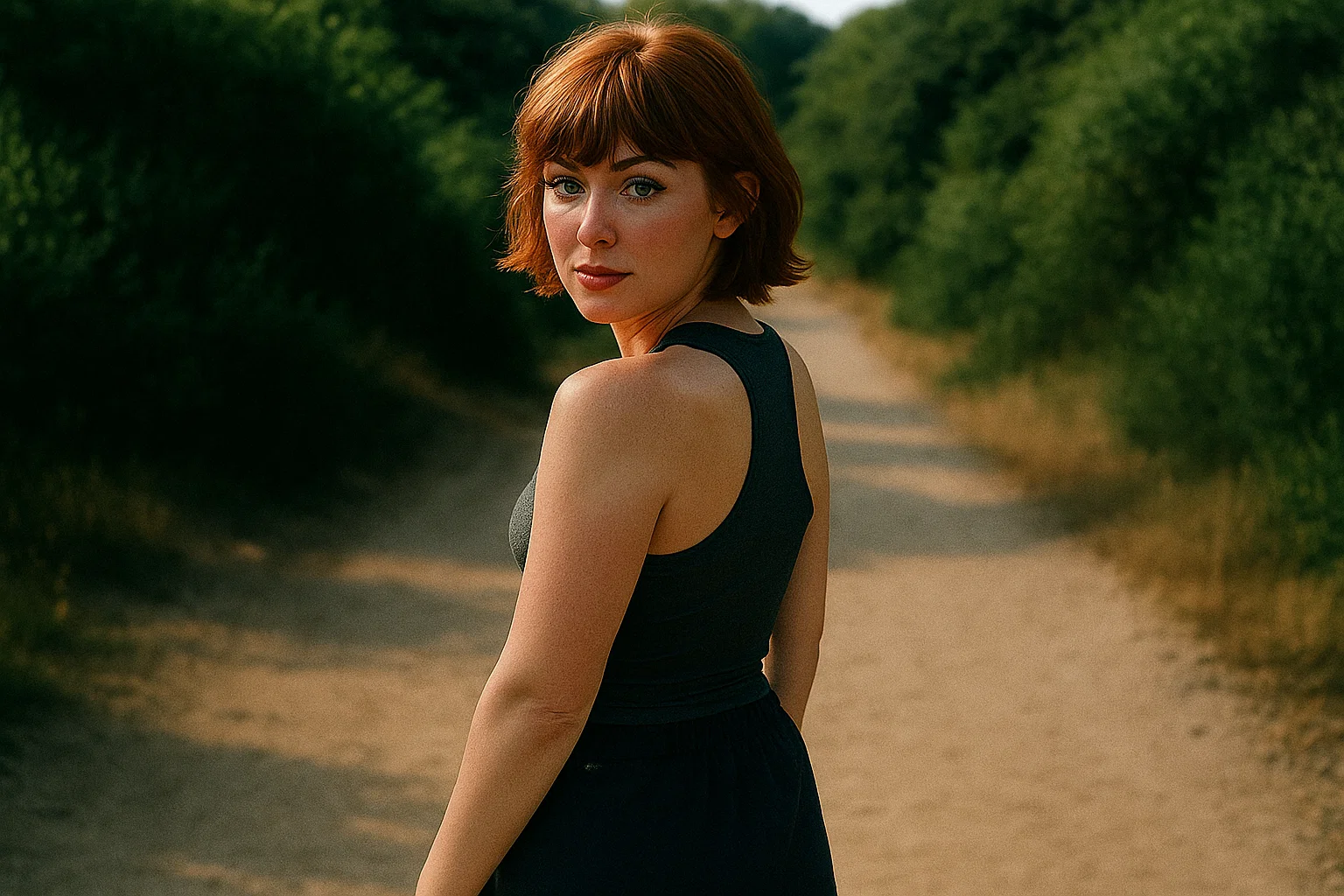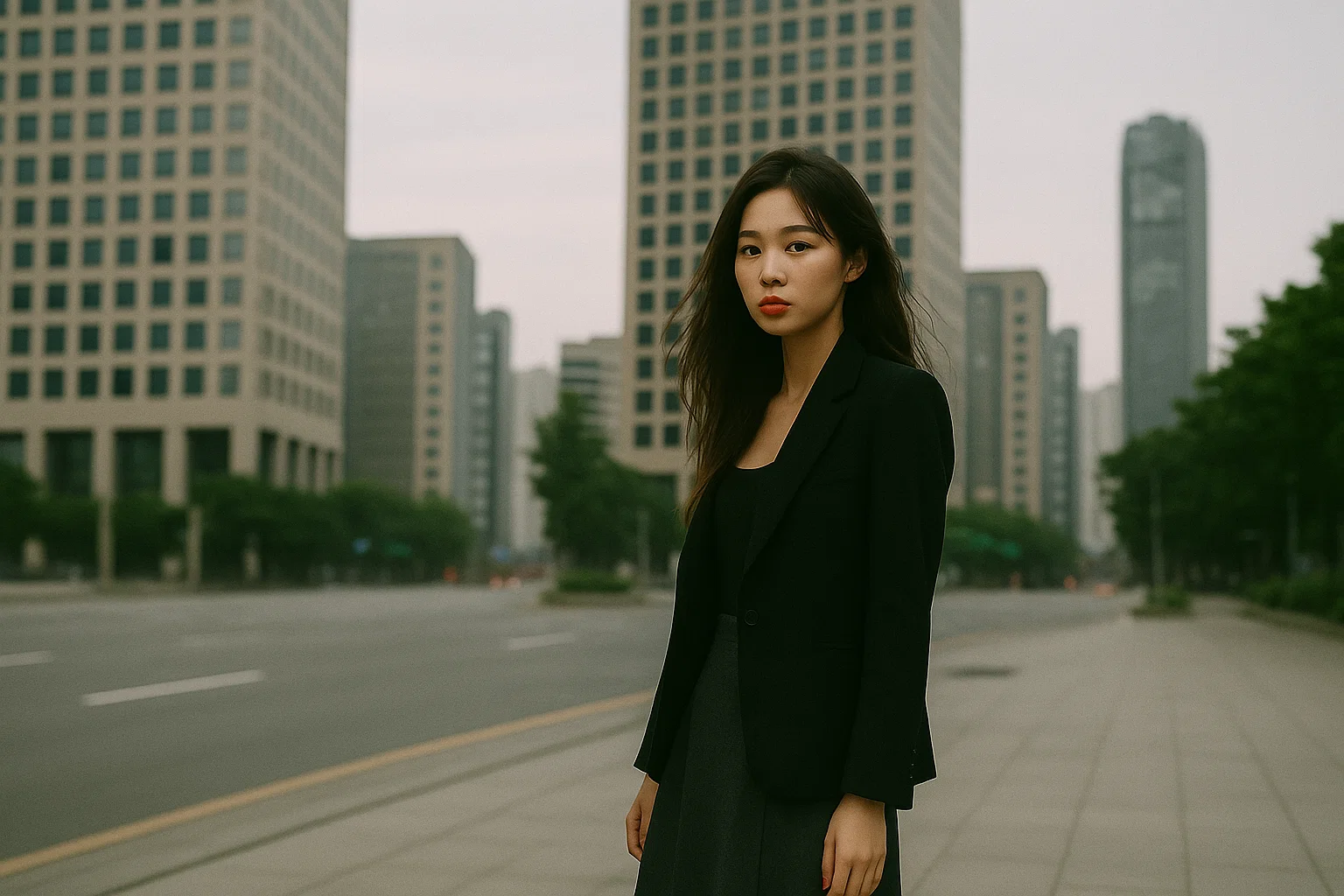1. What Is Film Grain?
Film grain—see Wikipedia—is the speckled texture visible on developed film, resulting from clusters of metallic silver in the emulsion.
- Origins: Grain forms when silver-halide crystals are exposed and chemically reduced to metallic silver during development.
- Influenced by ISO: Fast films (ISO 800–3200) use larger crystals for sensitivity, producing coarser grain; slower films (ISO 100–400) yield smoother images.
- Examples: Ilford Delta 3200 is renowned for its prominent black-and-white grain. Kodak Portra 160, by contrast, offers much finer color grain.
These films exhibit distinct visual flavors—grain not only adds texture but affects mood and tonality.

2. Digital Film Simulations: From Concept to Camera
Digital sensors lack physical grain. Enter film simulations—software-driven profiles that mimic analog film by adjusting color, contrast, and tone. The broader concept of film emulation involves mathematically modeling real film behavior to apply via LUTs or in-camera profiles :contentReference[oaicite:1]{index=1}.
2.1 Fujifilm: The Pioneer
Fujifilm’s Film Simulation modes are widely considered gold standard in-camera look generation.
- These modes emulate the tone, color balance, and contrast of Fujifilm’s iconic analog films—Provia, Velvia, Astia, Classic Chrome, etc.—and are based on deep color science knowledge :contentReference[oaicite:2]{index=2}.
- Modern Fuji cameras offer up to 20 simulation modes, including REALA ACE on newer GFX and X models :contentReference[oaicite:3]{index=3}.
- A unique Grain Effect can be paired with simulations—using a pseudo-random engine to mimic authentic film grain—not just noise :contentReference[oaicite:4]{index=4}.
- For example, Acros replicates NEOPAN Acros 100 with rich tonality and fine grain; Classic Chrome gives a moody, magazine-style aesthetic; Velvia offers punchy landscapes :contentReference[oaicite:5]{index=5}.
- Users can also craft Film Simulation Recipes, which bundle simulations, Grain Effect, Color Chrome, WB, tonal curves, and more, transferring them via camera menus or apps :contentReference[oaicite:6]{index=6}.
- Usage tip: Film Simulation is applied to JPEGs; RAW files are marked for post-processing apps that recognize the profile—allowing you to match in-camera preview or bypass it :contentReference[oaicite:7]{index=7}.

2.2 Sony: Flexible Looks via Creative Tools
Sony mirrorless cameras don’t use film-named simulations, but offer two creative systems:
- Creative Looks/Styles: Accessible and quick presets (e.g., Film Look “FL”, Vivid, Standard); they allow contrast and color shifts but lack grain and Fuji’s specialized effects like Color Chrome :contentReference[oaicite:8]{index=8}.
- Notably, the FL (Film Look) mode on the A7 IV has earned praise as a compelling film-style JPEG out of camera :contentReference[oaicite:9]{index=9}.
- Picture Profiles (PP): Originally for video, these offer granular controls—black level, color mode, depth, detail—and are powerful tools for crafting film-esque color even in stills :contentReference[oaicite:10]{index=10}.
- Users on communities like r/SonyAlpha have shared dozens of film-style PPs emulating Portra 400, Kodachrome 64, and more :contentReference[oaicite:11]{index=11}.
- Adjusting only JPEGs via Creative Looks can limit fidelity; for deeper control, shoot RAW with custom PPs or color grade in post.
2.3 Canon: In-Camera Grainy Styles
Canon EOS series provides:
- Creative Filters, including Grainy B/W, which embeds a grungy, high-contrast black-and-white JPEG with visible grain in real time :contentReference[oaicite:12]{index=12}.
- Contrast strength is often adjustable (e.g. up to three levels), but this only applies to JPEGs, not RAW :contentReference[oaicite:13]{index=13}.
- Picture Styles (Standard, Portrait, Monochrome) enable refined tweaking of parameters but do not include named film emulations or grain overlay by default.
- Canon’s system prioritizes ease-of-use and in-camera creativity, though deeper emulation requires post-processing or external profiles.
2.4 Nikon: Recipes and Picture Controls
Nikon lacks official film-style presets, but users utilize:
- Picture Controls: Standard presets (Neutral, Vivid, Monochrome, etc.) with editable parameters like contrast, hue, saturation.
- Flexible Color Picture Control: Included in NX Studio software; enables advanced color grading and custom profiles exported to mirrorless Z-series bodies :contentReference[oaicite:14]{index=14}.
- Imaging Recipes: Curated community presets that mimic film aesthetics (some inspired by Fuji); downloadable to cameras via Wi-Fi :contentReference[oaicite:15]{index=15}.
- These recipes approximate film tones—not grain—but allow creative film-like color directly in-camera.
3. Brand Comparison Table
| Brand | Film Sim. Names | Grain Support | Notable Strength | RAW Support |
|---|---|---|---|---|
| Fujifilm | Yes—Provia, Velvia, etc. | Yes—Grain Effect | Highly accurate simulation, recipes, previews | RAW tagged |
| Sony | No—Creative Looks, PPs | No grain built-in | Flexible PP control, film recipes via community | RAW + PP |
| Canon | No—Creative Filters | Yes—Grainy B/W only | Easy in-camera JPEG styles | RAW neutral |
| Nikon | No—Picture Controls, Recipes | No (color only) | Community recipes, color grading via NX Studio | RAW + custom |
4. Why This Matters for Beginners
- Film grain adds mood and authenticity—knowing where it comes from helps you shape your look intentionally.
- In-camera simulations enable instant creativity without post work—Fujifilm excels here; Sony, Canon, and Nikon offer creative alternatives.
- JPEG vs RAW: Simulations affect JPEG only; RAW remains unaltered unless post conventions or presets are applied. Fujifilm applies flagging for RAW, Sony & Canon/ Nikon require manual post-processing.
5. Additional Resources
- Fuji’s in-depth breakdown of Film Simulations, their color science, and how to apply them—great reading for image nerds
- Canon’s Creative Filters explanation and step-by-step for Grainy B/W
- Sony community film recipes and PP tutorials—see veresdenialex site and r/SonyAlpha forum
- Nikon imaging recipes and how-to guides—search via One Camera One Lens and NikonPC community .
Modern digital cameras offer remarkable tools to evoke classic analog aesthetics. Whether you prefer shooting in-camera with simulations or crafting custom styles, understanding the mechanics—from film grain origin to simulation design—empowers you to use your camera not just as a capture device, but as a creative instrument.
Happy shooting!
